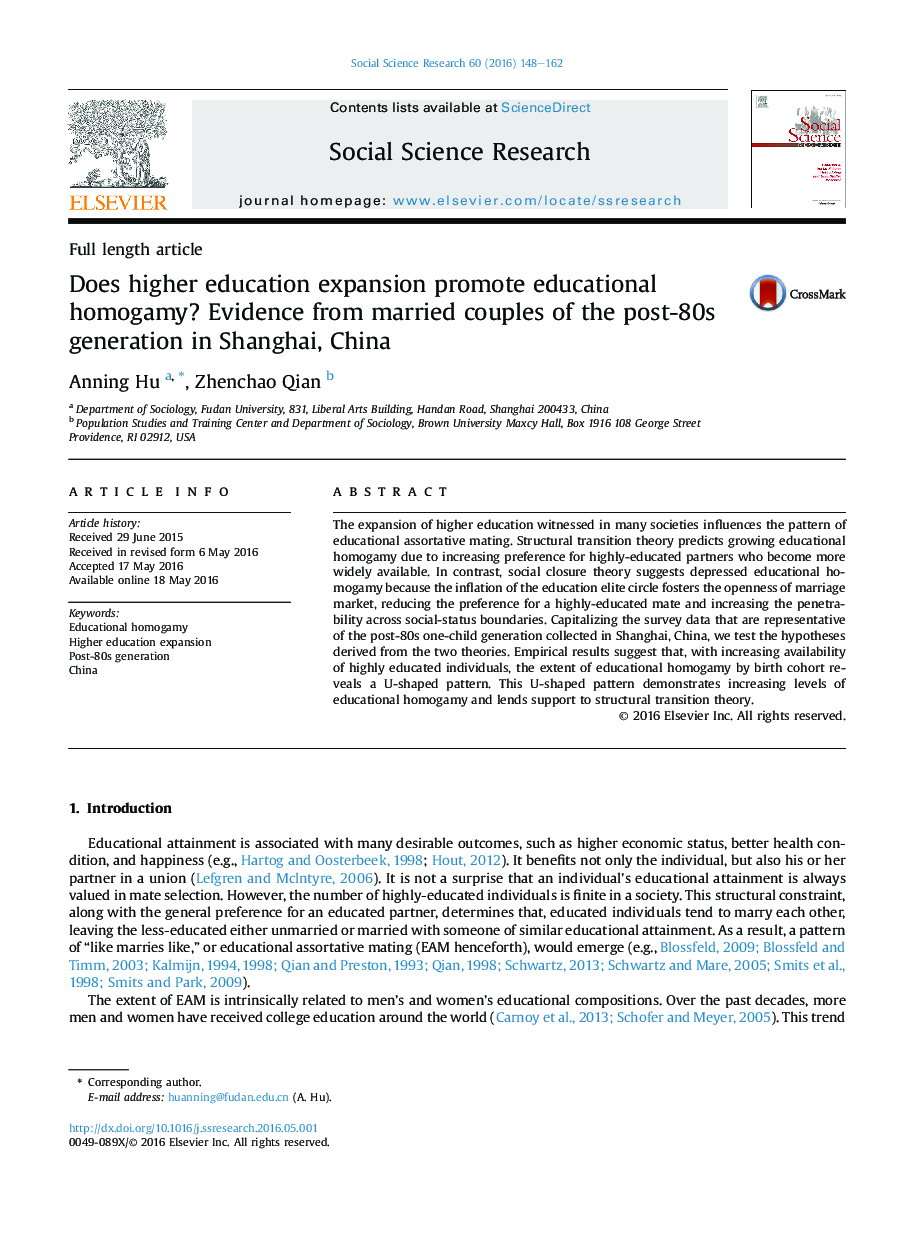| Article ID | Journal | Published Year | Pages | File Type |
|---|---|---|---|---|
| 5047090 | Social Science Research | 2016 | 15 Pages |
â¢The sample of the post-80s generation collected in Shanghai is analyzed.â¢A U-shaped pattern of educational homogamy by cohort is detected.â¢Structural transition theory is supported.
The expansion of higher education witnessed in many societies influences the pattern of educational assortative mating. Structural transition theory predicts growing educational homogamy due to increasing preference for highly-educated partners who become more widely available. In contrast, social closure theory suggests depressed educational homogamy because the inflation of the education elite circle fosters the openness of marriage market, reducing the preference for a highly-educated mate and increasing the penetrability across social-status boundaries. Capitalizing the survey data that are representative of the post-80s one-child generation collected in Shanghai, China, we test the hypotheses derived from the two theories. Empirical results suggest that, with increasing availability of highly educated individuals, the extent of educational homogamy by birth cohort reveals a U-shaped pattern. This U-shaped pattern demonstrates increasing levels of educational homogamy and lends support to structural transition theory.
